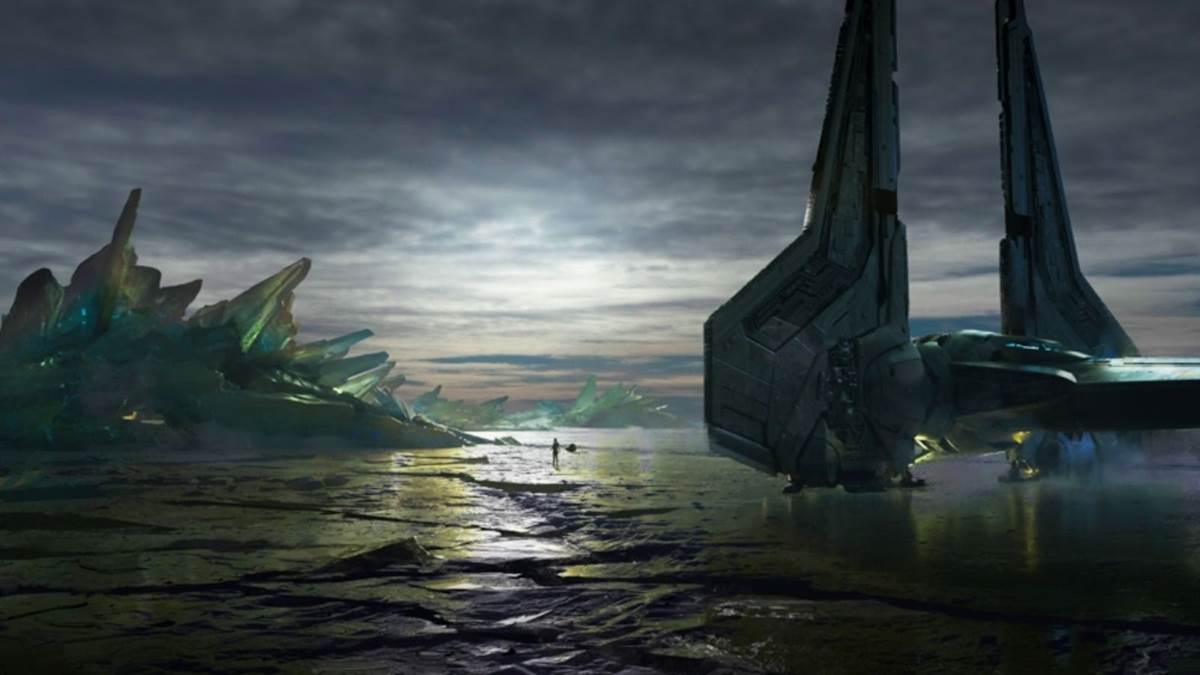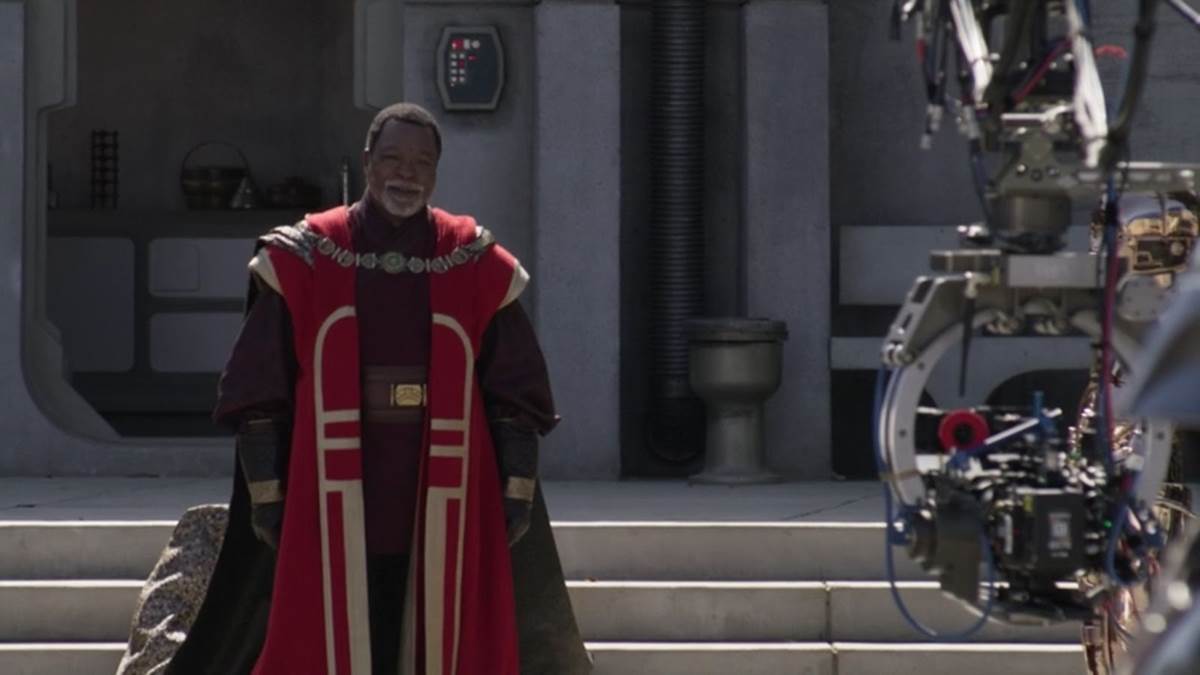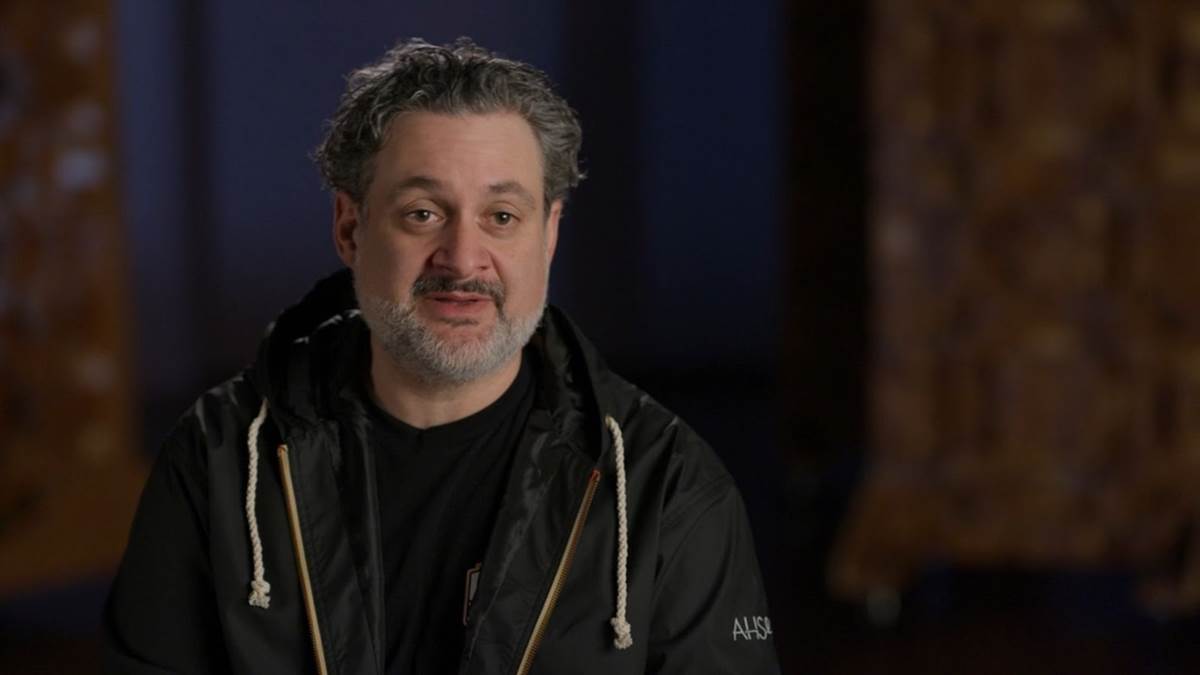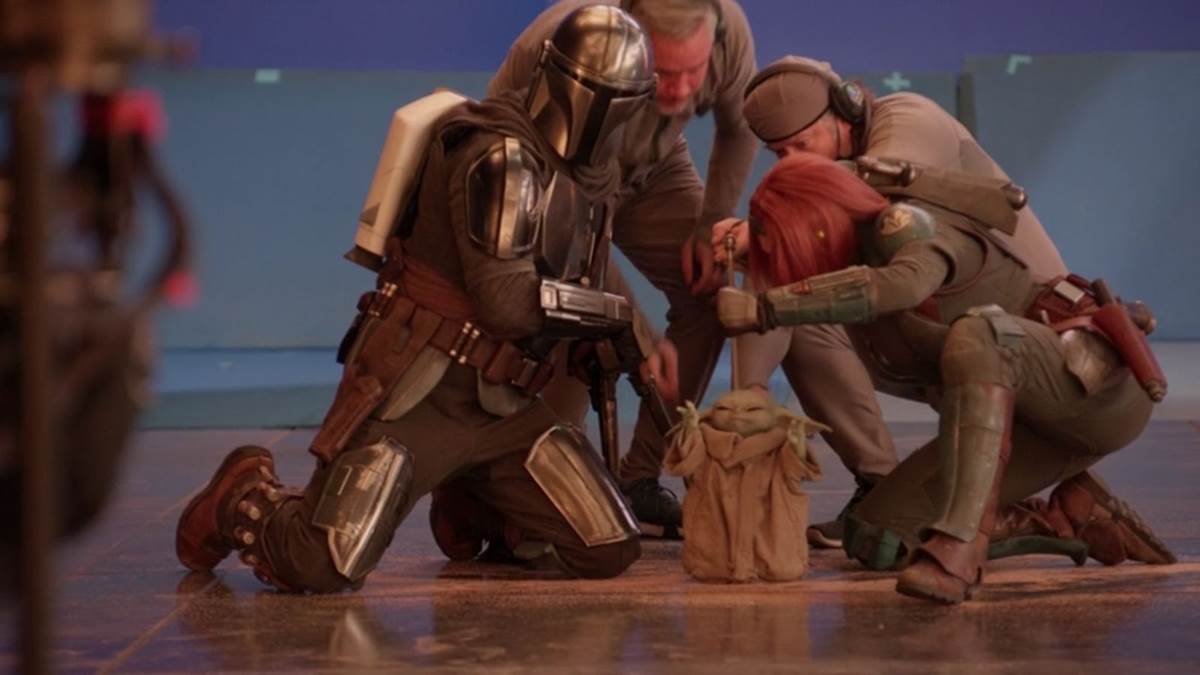Today on Disney+, Lucasfilm released the latest episode of its Disney Gallery – Star Wars: The Mandalorian behind-the-scenes series, entitled “Making of Season 3.” In the bullet-point list below, I’ve enumerated all the most interesting tidbits and fascinating factoids revealed during this hour-long documentary special.
- The special opens with executive producers Jon Favreau and Rick Famuyiwa talking about how The Mandalorian has expanded from being a very simple story to tying in with the much larger Star Wars universe.
- The third executive producer Dave Filoni says they had to find a way to merge his concept of Mandalorian culture with Favreau’s in order to bring the series into season 3.
- Favreau and Filoni talk about how Lucasfilm President Kathleen Kennedy helped them bring in more filmmakers to expand the creative team behind The Mandalorian as its story necessitated.
- The conversation turns to new filmmaking technology, and director/actor Carl Weathers mentions how much he has learned from working on set.
- Peter Ramsay, director of Spider-Man: Into the Spider-Verse, talks about being brought into the world of The Mandalorian from his work in animation, and how the two worlds complement each other. Ramsay says he’s been a Star Wars fan since the first movie came out.
- Next we hear from Lee Isaac Chung, director of Minari, who managed to get in touch with Favreau through his agents after admiring the series.
- Rachel Morrison, who is best known for her work as a cinematographer on movies like Marvel Studios’ Black Panther, was excited to work on the Volume and the ILM-developed technology known as Stagecraft. “You drop anything one can relate to into a world, and it’s still grounded. It’s still emotional.”
- Returning The Mandalorian director Bryce Dallas Howard talks about the challenge of working with a main character who is wearing a helmet throughout the run of the show. Favreau says he associated helmets and masks with the original Star Wars trilogy. He says they chose to balance out the helmeted Mandalorian character with Grogu, because he’s so empathetic. “The combination of these characters became the heart and soul.”
- Famuyiwa talks about how the title The Mandalorian refers to several different characters this season, including Bo-Katan Kryze. This leads into a sequence where all the show’s creators and actress Katee Sackhoff talk about why Bo-Katan is such an interesting character to explore.
- Favreau said they know season 3 would have to feature the character visiting the planet Mandalore, and that they would have to deal with everything they had set up with the Darksaber, Bo-Katan’s journey, and the creed.
- Production Designer Doug Chiang discusses the challenges of designing Mandalore, a planet that had not been seen in live-action before. The idea was that Mandalore has been subjected to so many explosions that its surface had fused into glass shards.
- We then visit the model shop, where miniatures were built for the locations and legendary visual-effects artist Phil Tippett’s team was brought in to make it look even more like Star Wars. “We thought that Phil would be great to collaborate with on what Mandalore would look like,” says Favreau.
- Next Favreau talks about the origins of the Mythosaur creature in Star Wars lore and why it became so important in the series via the explorations of Mandalorian culture. He also mentions how satisfying it is to set something up and pay it off much later in storytelling, either in movies or on television.
- Filoni discusses the mythological implications of Bo-Katan seeing the Mythosaur underwater, and what it means for the character going forward.
- Chiang talks about creating new environments for the series, and about recreating Star Wars environments we had already seen in other media, such as Coruscant. He adds that most of the planet had already been designed way back in 1995 for the prequel trilogy, though we only got to see a small portion of that work in the finished movies.
- Chung says he went back to look at Revenge of the Sith in order to best replicate the feel of the Coruscant Opera House from that film in The Mandalorian. Even the design of the air taxis was lifted right from the prequels. Chung also says he borrowed from Alfred Hitchcock’s style and use of suspense for his episode, “The Convert.”
- The next section covers Carl Weathers’ work as a director for one episode this season, “The Foundling.”
- Filoni talks about how, with each season, he and Favreau always try to give the audience something they hadn’t seen before– the best example being a “Baby Yoda” in season 1. Howard says the Grogu puppet has improved as each season has gone by. The Grogu puppeteers say they appreciate it when the filmmakers treat the puppet like an actor. Both Favreau and Weathers agree that the story is often told from Grogu’s point of view.
- Favreau and Filoni talk about the decision to make Jedi Master Kelleran Beq Grogu’s savior from Order 66. “Ahmed Best has been such an important part of our Star Wars history,” says Filoni. “He grew up as part of it, through all different eras of it,” adds Favreau. “He also has martial arts training.” We also get a nice moment with Best talking about what it feels like to be back on the set of Star Wars.
- We then hear from Emily Swallow about her character, the Armorer, and how she has evolved over the three seasons.
- Similarly, Ramsay and Weathers talk about the evolution of Greef Karga.
- There’s a section of the documentary about the stunt team and the fun new ideas they got to try out in season 3. “There’s a lot more Mandalorians. There are scenes where we’ve had 30-plus stunt people working at the same time.” The property master also talks about the amount of Mandalorian weapons he and his team had to create for the season. Then costume designer Shawna Tripcic talks about the costumes needed for all those various Mandalorian background characters. The Mandalorian “survivor” characters were also given unique designs that looked as though they had cobbled together their armor from natural resources around the planet.
- Filoni says he originally designed Bo-Katan’s helmet on a napkin during a Southwest Airlines flight.
- Swallow and Sackhoff talk about how awkward and difficult it can be to act and move within their suits, and Swallow says she met members of the 501st Legion and other Star Wars fan cosplay groups who all agreed. “You really have to be conscious of what a head movement says. Every tilt, every little thing was so ‘loud’ on camera, so we had to be incredibly specific about what we were doing. It was such a wonderful time of trial and error.”
- We then get a section about Howard’s episode for this season, “Guns for Hire.” She talks about the casting of Jack Black, Lizzo, and Christopher Lloyd. We also hear from Black a little bit, who tried to come up with more of a backstory for his character Captain Bombardier. We get a clip of Lizzo meeting Grogu for the first time, and being extremely enthusiastic about it. There’s even a great bit of Jack Black riffing on The Mandalorian’s theme music with Jon Favreau. Sackhoff says she had a hard time keeping a straight face because Black and Lizzo infused so much energy and unpredictability into the show.
- Chiang talks about the creation of Plazir and populating a cantina with droids. The puppeteers believe it was the most live-action droids ever featured in one Star Wars scene. Most of them were controlling two puppets each at any given time.
- The character of Axe Woves was originally written to die in season 2, but Bryce Dallas Howard is happy that he stuck around. “He’s so great.” Actor Simon Kassianides agrees. “I had no idea I’d be back. It just knocks my socks off.”
- Favreau says fans thought Din Djarin would transform from a bounty hunter to the leader of Mandalore, but that he planted clues it would go a different way– with Bo-Katan reclaiming the Darksaber. “What many expected to be a showdown between the two of them, ends up with them both going for something completely different, and working together.” Filoni follows that up by talking about the meaning of the Mandalorian sects coming togethers.
- Filoni also talks about how fun and simple things in Star Wars often become darker and more meaningful as the story goes on. “The smallest lives and most insignificant people can sometimes rise up and do the greatest things.”
- We hear about the idea of putting Grogu inside IG-11 as a mech suit “like Ripley from Alien.” The puppeteers talk about how this complicated puppet works.
- Next, Famuyiwa talks about actor Giancarlo Esposito and his role as Moff Giden. We also hear from Favreau about what Esposito brings to the role. We see behind the scenes of the “Shadow Council” scene. Giancarlo talks about how even Gideon’s journey is the Hero’s Journey, and he thinks a “rise from the ashes” is possible for the character.
- Chiang discusses the creator of Gideon’s hidden base on Mandalore, in pockets of natural caves. The Empire has come in and modified that architecture. He says they always try to build in emotional cues in their designs for the environments.
- We see rehearsals for the final battle in the season 3 finale, “The Return.” Howard sings the praises of stunt performer Lateef Crowder. Sackhoff talks about wanting to do her own stunts. There was one particular knee-slide stunt she performed on set that she was initially told not to by the stunt coordinator, but she was proud of herself.
- Filoni talks about Djarin’s arc being one of accepting family, and Favreau follows that up by talking about what roles Grogu and Din fill in each other’s lives. “Star Wars, most of the time, is about family,” says Filoni. “That’s something that people are relating to in this great galaxy.”
- “Storytelling isn’t always about what you set out to do. It’s about what you discover and what comes out,” concludes Favreau. “Resolving the season the way we did fulfills one of the Western tropes of the gunfighter moving on, and things change. His presence has helped things take the next step, but that doesn’t mean the gunfighter belongs there.” He adds that Mando and Grogu will likely get a brief respite, but more adventures are always around the corner.
Disney Gallery – Star Wars: The Mandalorian “Making of Season 3″ is now available to stream exclusively via Disney+.
Sign up for Disney+ or the Disney Streaming Bundle (Disney+, ESPN+, and ad-supported Hulu) now





